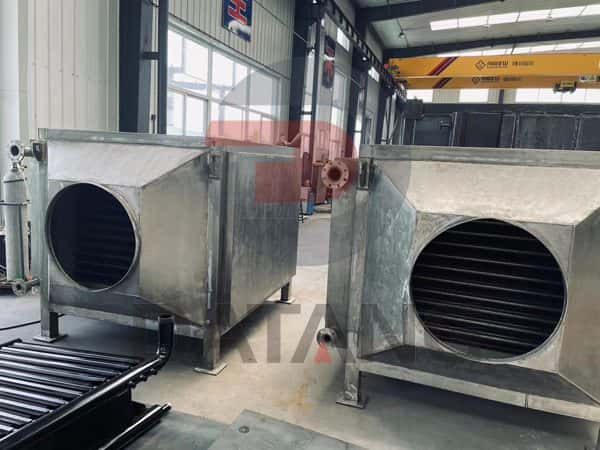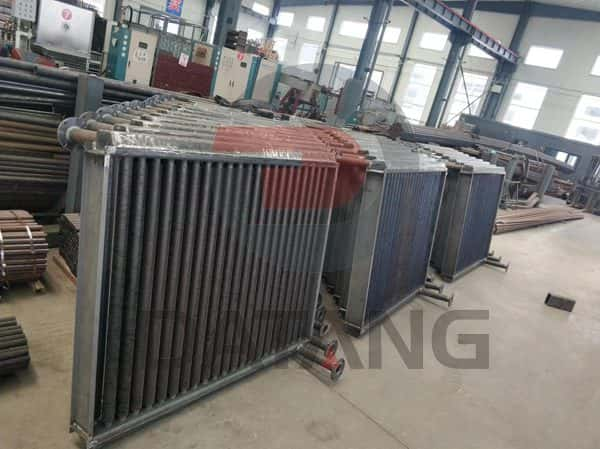Finned Tube Heat Exchanger Design.
In recent years, finned tube heat exchangers have been widely used in textile printing and dyeing stereotypes, wood drying, grain, oil and food drying, coating and baking paint dehumidification, power and petrochemical industries, and all have achieved satisfactory results.
Due to the different process conditions and requirements, it is necessary to design a variety of finned tube heat exchangers that are most suitable for the actual situation.

The following principles should be followed in the design of finned tube heat exchangers:
1; Under the given process temperature and flow rate, the outlet must meet the temperature requirements.
2. Reasonable heat exchange area and appropriate design margin.
3. On the premise of meeting the pressure loss requirements, try to improve the heat transfer coefficient, reduce metal consumption, and reduce equipment costs.
4. Selection of finned tube material, considering the requirements of fluid corrosion, wear, pressure, temperature, etc.
5. Stress relief may occur for temperature changes.
6. Calculation of strength of tube sheet, tube box and components.
7. Installation form and restrictive requirements for the length, width and thickness of the external dimensions.
8. Consideration of equipment accessories. Including condensate removal method, maintenance manhole, liquid level switch, reserved hole for temperature control electric thermocouple, pressure gauge and exhaust hole, exhaust hole, etc.
9. Feasibility of fabrication and welding process. Convenience of later maintenance and installation and transportation.

finned tube heat exchanger
10. Cost-effectiveness of investment in finned tube heat exchanger equipment.
The above factors will restrict and influence each other. In the case of different processes, the focus will be different, so the importance of various factors should be considered in many aspects when designing a finned tube heat exchanger. Usually the focus is divided into three categories;
1. The heat exchange effect, the finned tube heat exchanger that cannot achieve the heat exchange effect is equivalent to a pile of scrap iron, or the temperature is lower than the design requirements, which will affect the production efficiency of the product, and in serious cases, affect the quality of the product.
2. The safety and reliability of equipment operation.
If there is a problem with the heat exchanger, the loss of production stoppage and the pollution loss caused by the product may be far greater than the investment in the equipment.
3. Balance of comprehensive investment cost and operating cost of equipment.
For example, if it is necessary to reduce the heat exchange area at the cost of increasing the wind pressure, it is not worth the loss. Increasing the wind pressure will increase the power consumption of the motor, and the cost of long-term operation will far exceed the equipment investment.
